:dropcap_open:D:dropcap_close:r. Singer received his undergraduate degree from Rutger’s University, his M.S. degree in nutrition from the University of Bridgeport, and his Doctorate from the New York College of Chiropractic. Graduating with honors as the salutatorian of his class, he was inducted into Phi Chi Omega, the International Chiropractic Honor Society.

In his first year of practice, Dr. Singer was seeing more than 100 patients per day. Within the first eight years of practice, he was dubbed “Master of New Patients” by his peers, and was averaging more than 50 new patients per week despite the advertising limitations in his state.
His transition from private practice to practice management consultant came about due to the fact that he was constantly being asked to show his colleagues how to reach his level of success. In 1981, Dr. Singer founded his consulting company and since that time, his company has twice won the prestigious INC. Magazine’s Top 100 Fastest Growing Companies award.
Dr. Singer was a major supporter and contributor to the chiropractic anti-trust suit against the AMA, spearheaded by Dr. Chester Wilk, who, after 12 years, defeated the AMA.
In 2008 Dr. Singer was asked to sit on the Advisory Board for the Chiropractic Legal Action Fund. This organization helps provide the finances for the legal battles of the chiropractic profession. He also sits alongside the presidents of the ACA, ICA and numerous chiropractic institutes, at what is called the Chiropractic Summit. This organization was created to help ensure the future of the profession.
TAC: Here I am with Dr. David Singer, chiropractor, practice coaching expert—specifically to ask him questions about collecting cash as insurance reimbursement become less and less. Dr. Singer, could you tell our readers a little bit about your background, getting started, right up to today?
DR. SINGER: Well, first of all I’ve been a chiropractor for thirty nine years. I started my practice in 1972 and ’73 so there was nothing other than a cash practice. I started my practice at seven dollars a visit, and it was all cash—there was no Medicare coverage, there was no auto coverage, there was just no coverage. Many of you who are reading this who have been in practice only the last twenty years never experienced what it’s like to be in a practice that’s all cash, and it probably sounds intimidating, frightening, and fearful—and you ask, “what am I going to do if insurance stops?” How am I going to survive living without insurance?” The fact of the matter is, for those of us who practiced in the early days, every one of us will tell you it was a lot more fun, a lot easier, and you went home at the end of every day and knew how much money you made. You didn’t have to fight for every dollar you earned.
:dropcap_open:In his first year of practice, Dr. Singer was seeing more than 100 patients per day.:quoteleft_close:
Your overhead was a heck of a lot lower. For those of you who are reading this, this is not a discussion about whether you should stop billing insurance, that’s not the issue. Obviously, if you’re in a state where you have great coverage, you ought to take advantage of the insurance that’s available. I just met with a Medicare representative and here are some of the numbers for you who are reading this to be aware of.
Our profession ten years ago was paid nine hundred and eighty million dollars by Medicare. Last year, Medicare paid the entire chiropractic profession a little over five hundred million. In that period of time we’ve had hundreds if not thousands more chiropractors. You would think that the amount of money we would be getting from Medicare would go up, given the fact we have so many more chiropractors practicing. I don’t think I’m telling you any secret you don’t know, but the amount of reimbursement that the profession of chiropractic is getting from federal and state programs is going down and down and down, so the subject of cash practice is not a discussion of, “should I quit billing insurance,” but rather it’s a discussion of, “How do I actually collect what insurance companies are not paying?”
TAC: Now, for someone out there that’s been in the field filing insurance for years, and all of a sudden that well seems to be going dry for them, I’m sure they’re looking at you right now saying, “So how should I adapt to these current market trends”?
 DR. SINGER:
DR. SINGER: Well, here’s how I feel it goes. You’ve got to take a look at the consumer. When they come to see you at your practice, their goal—they have a goal—is to get rid of their pain, their suffering, and to do that in the least expensive way possible.
There’s nobody who walks into your clinic who has the goal in mind to spend as much money as possible, to go to you as long as they can. Their goal is a quick fix. We live in a society where everybody’s looking for a quick solution to every problem they’ve got. There’s no difference in our profession. In a cash-oriented practice, the solution is knowing how to communicate more effectively with the people you see.
Here’s how it goes: the less money that you are asking people to pay you, the less skill you need to have in knowing how to handle people. If you are asking for a lot of money, you have to have greater skill in the area of communication in order to get the person you’re talking to to feel that paying you would be worth the money. The consumer must feel what you’re offering them is of great value to get them to spend a lot in a tough economy. If you want me to make more comments on this, just ask me.
TAC: Please do. Do you mean speaking in scientific terms, representing studies, or are you talking about building a relationship with the patient?
DR. SINGER: So here it goes: I come to see you and I’ve got lower back pain, and I’m willing to pay to get out of that pain, that’s why I’m in your office. If I can only afford forty dollars a week and you’re charging me one hundred and eighty dollars for the first visit, sixty-five dollars for each visit thereafter, I will make a judgment call. If I feel you can help me, I might put this onto a credit card, take some of my savings, or do whatever I need to do to get out of that pain.
If you’ve convinced me that you can help me, I will go and I will do that, but I can assure you the minute I feel free from that pain I will feel that going to you and paying you is more painful than my back pain, because my back pain is gone. So there’s two ways to look at how to move into a cash-oriented practice. One can look at it and say, “Okay, I’m going to try to convince this person that they really need a lot of visits, 30, 40 or 50 visits to get rid of that back pain.”
:dropcap_open:We all believe in that concept—and what’s the concept of wellness?:quoteleft_close:
I could sit there and lay out a program for you and say how severe your back is, how bad your discs are, how bad this is and that. I could sincerely tell you that it is really going to take those visits and it’s going to cost you, at sixty-five dollars a visit, over three thousand dollars, etc.
Or there’s another approach to this, which most people don’t even think of, and that is to sit down when a patient comes to us and expand what their goals are. In other words, their goal as we all know is to get out of pain as quickly as possible, but can you, through your communication with them, hold out to them a bigger picture, a bigger goal?
You go into a shop to buy a tie, and they show you a shirt that would go really good with the tie. Then you go, “well I really only wanted to buy that tie, but that shirt looks really great on me.” I mean, all of you reading this have had an experience during the holidays—which are coming up soon—where you go to buy someone else a gift but you see something you really want, well, you buy that for yourself also. I mean, you weren’t really planning on that, but it looked so good and it’s on sale and you buy it. Well, what we as a profession have to learn how to do is take the consumer and make available to them a goal—more than just getting rid of pain—that would excite them, motivate them, and that you could deliver, that they feel would be worth a lot more than simply getting rid of that pain.
TAC: You’ve been doing this for thirty years and you currently consult one thousand clinics a year, that’s quite a busy schedule then. Could you comment on trends in the healthcare market going forward?
 DR. SINGER:
DR. SINGER: Here’s my advice to the reader: we’re moving into this wellness revolution, everybody’s talking wellness. We all believe in that concept—and what’s the concept of wellness? That you can live longer, you can have your youth, your vitality, your energy. You can even look younger to other people. So, if I was to sit down with you and I said, “Listen, I know you’re coming here today looking for help to get rid of your back pain, and I certainly want to help you with that, but I want you to know, because we have more of a wellness-oriented practice, we actually have a larger goal for the people we meet, and that goal is to help our patients not only get free from pain, but live longer.
I mean I actually feel I could put ten years on your life if I was to have your body functioning the way it should, if we get you on to a better nutritional program, and we actually show you how to take care of yourself. I mean, you have to ask yourself this question: Do you think ten years from now you’re going to be healthier, or do you feel ten years from now you’re going to be in worse shape? So the point I’m making is if you feel that, given your lifestyle and how you take care of yourself, ten years from now you’ll probably be in worse shape than you are now, then I just want to let you know that we can reverse that process.
We have a wellness center, we know how to help people live longer, feel younger, and actually have a better functioning body. But listen, you’re here for your first visit, and I just met you, let’s take a look at what we can do to help you with your back problems, and as you get to know me I’ll tell you more about what I do. If living longer and being healthier is something you have an interest in then I’d obviously like to help you more than just get rid of pain.” In other words, what I’m saying is you don’t have to sell it, you don’t have to force it down people’s throats, what we can offer people is so wonderful…all you’ve got to do is let them know it’s there.
Now, a major issue in your practice really does come down to knowing how to handle money. It’s not just about how to handle the patient, but it’s also about how to handle money. If you were to offer people options regarding being as healthy as possible and you know how to explain what we can do to help them become healthy, people will want it. How to do that is a longer discussion than what we have time for in this article.
The way to get people under your care is to simply ask them one question, after a thorough, honest explanation of how you truly can help them be healthier and live longer: If you could afford it, what kind of care would you want? Would you want the care to just get out of pain, or would you want to have the care that could actually make you a truly healthier person? If we could help you have more energy, youth, and vitality, if we could add a few years to your life, if you could afford it, what would you want? And I’m going to tell you, with proper patient education everybody says, “If I could afford it, of course I’d want to be as healthy as possible.” Now, obviously you’ve got to lay down principles and concepts that get them to understand that you can help them to that goal, but then you got to be able to say to them, “If you could afford it, what would you want?” And I’m going to tell you, if somebody came in to buy a tie and you show them this beautiful shirt, then you show them a beautiful suit, and you said to them, “Listen, take a look at that. If you could afford this, not just the tie but the shirt and the suit, would you want them?” I’m telling you, most people, if they liked how they looked in that suit—and here’s the truth of the cash game—if they wanted it they will purchase it. You see, the art of patient management is to get people to want what you’re offering before you ever try to sell it to them.
:dropcap_open: In other words, what I’m saying is you don’t have to sell it, you don’t have to force it down people’s throats, what we can offer people is so wonderful…:quoteleft_close:
What I believe is wrong with a lot of doctors is they try to sell things to people, as opposed to getting them to want it. If somebody wants something, then it’s the patient and you on the same team, you understand? You want the care, or you want the suit, I want to have you get the suit, I want you to get the care. You want it, I want you to have it, all you’ve got to do now is work out the economics–we’re on the same team. But if I’m trying to convince you, if I’m trying to sell you something, then I’m trying to talk you into something, and what you’re going to hear a lot in your practice are the following words, which you’ll hate to hear: “I want to go home and think about this. Let me go home and think about it.” Which, by the way, means, “I’m not coming back.”
To educate people properly takes more than one visit. We believe you should start taking care of people as soon as you feel it is right. If your style of practice is you adjust them on the first day or the second day, it doesn’t matter. What matters is before you ever try to get them to agree on a program, you’ve got to first get them to want it. That’s the art. Getting them to want what your goal is, not getting them out of pain.
We already know they want to do that, that’s why they’re in your clinic—but you need to learn how to get them to want a broader picture for themselves and their future. You also need to learn the art of handling money, which is knowing how to work out budgets. Getting people to be able to pay you what they can afford, as opposed to getting them to build up a debt on a credit card. When I say ask people, “if you could afford it, what would you want to do?” And they go, “I want to be healthy if I can afford it,” then it’s your job to figure out a budget that would allow that to happen. Again we teach our clients how to do this, but we don’t have time to do that here.
TAC: Thank you for being so forthcoming and sharing with the readers here. How would a chiropractor at home right now get in touch with you, learn more about what it is that you offer?
DR. SINGER: The answer to that question would be: call our office, 1-800-326-1797, and ask for Taylor or Michelle, and let them know you’d like to join me on a teleconference. We hold two-hour teleconferences three times a week. We charge nineteen dollars, and that money goes to the Chiropractic Legal Action Fund. In other words, we raise money to help our profession get better reimbursement.
The money is donated to the Chiropractic Legal Action Fund that is currently in litigation to fight for better reimbursement for chiropractic. I do this to help my profession; I do it to help you. Call in and join us in one of our conferences at 1-800-326-1797 and I can assure you those two hours will be the best two hours that you have ever spent on new patient marketing and patient management.
TAC: Thanks for your time, Dr. Singer. Look for future issues of The American Chiropractor online with video content as well. Have a great day.
 As a chiropractic educator, Dr. Heffernan taught the 90-minute chart presentation for Renaissance International from 1978 through 1980. He has a Fellowship in Applied Spinal Biomechanical Engineering (ASBE) and served as its executive director from 1985 to 1992. He also served on the Board of Directors of the Wisconsin Chiropractic Association for six years. He currently serves on the Board of Trustees at Life University.
As a chiropractic educator, Dr. Heffernan taught the 90-minute chart presentation for Renaissance International from 1978 through 1980. He has a Fellowship in Applied Spinal Biomechanical Engineering (ASBE) and served as its executive director from 1985 to 1992. He also served on the Board of Directors of the Wisconsin Chiropractic Association for six years. He currently serves on the Board of Trustees at Life University. It’s just been well documented over and over that when you’re dealing with nutrition, there is a condition that has been termed “post-prandial dysmetabolic syndrome,” which is eating hollow calories and the body treating it as a poison. When we’re consuming non-nutritive, hollow calories, the body interprets it as a poison, and it creates an inflammatory response.
It’s just been well documented over and over that when you’re dealing with nutrition, there is a condition that has been termed “post-prandial dysmetabolic syndrome,” which is eating hollow calories and the body treating it as a poison. When we’re consuming non-nutritive, hollow calories, the body interprets it as a poison, and it creates an inflammatory response. I learned how to paint, and we did zinc-chromate priming and Imron painting so it will last forever. I put in stainless steel brake lines, stainless steel gas lines, stainless steel exhaust, stainless steel sleeves in the exhaust ports—everything to last for a long, long time. I put a blueprinted 350-horse power motor in the car, all re-machined, with a Mallory ignition system, poly carburetors, dual-plated Edelbrock manifold, and Hurst four-speed shifter. The car would go 140 mph. It was a phenomenal experience.
I learned how to paint, and we did zinc-chromate priming and Imron painting so it will last forever. I put in stainless steel brake lines, stainless steel gas lines, stainless steel exhaust, stainless steel sleeves in the exhaust ports—everything to last for a long, long time. I put a blueprinted 350-horse power motor in the car, all re-machined, with a Mallory ignition system, poly carburetors, dual-plated Edelbrock manifold, and Hurst four-speed shifter. The car would go 140 mph. It was a phenomenal experience.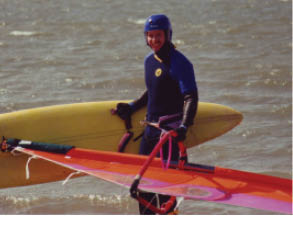

 He became the owner and manager of two orthopedic clinics in Israel specializing in Spine Disorders and Lower Back Pain. Professional memberships include: A member and active participant in the American Back Society, a member of the World Chiropractic Federation and a member of the Israeli Orthopedic Association.
He became the owner and manager of two orthopedic clinics in Israel specializing in Spine Disorders and Lower Back Pain. Professional memberships include: A member and active participant in the American Back Society, a member of the World Chiropractic Federation and a member of the Israeli Orthopedic Association.
 TAC: Can you think of one change that a chiropractor can do to significantly impact his/her practice’s growth immediately?
TAC: Can you think of one change that a chiropractor can do to significantly impact his/her practice’s growth immediately?
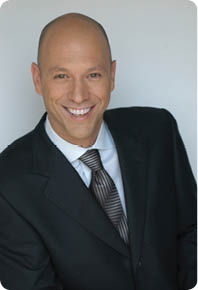
 Last year in a surprise move, Dr. Gentempo sold all of his interest in CLA and a controlling interest in CWA. When asked why he did this his response was, “I had a growing sense, based on certain trends, that action is needed in a new way on a larger scale. Chiropractic and health care in general are changing rapidly leaving us with both challenges and opportunities that I feel compelled to address. Act 1 in my career was practice, which I loved and I succeeded at that. Act 2 in my career was CLA and its derivative initiatives and the impact of that has been fulfilling and significant. After some soul-searching, I decided it was time for Act 3 and in Act 3 I’m going to deliberately address some important issues in chiropractic and healthcare, not the least of which is chiropractic insurance dependency in the United States.”
Last year in a surprise move, Dr. Gentempo sold all of his interest in CLA and a controlling interest in CWA. When asked why he did this his response was, “I had a growing sense, based on certain trends, that action is needed in a new way on a larger scale. Chiropractic and health care in general are changing rapidly leaving us with both challenges and opportunities that I feel compelled to address. Act 1 in my career was practice, which I loved and I succeeded at that. Act 2 in my career was CLA and its derivative initiatives and the impact of that has been fulfilling and significant. After some soul-searching, I decided it was time for Act 3 and in Act 3 I’m going to deliberately address some important issues in chiropractic and healthcare, not the least of which is chiropractic insurance dependency in the United States.”
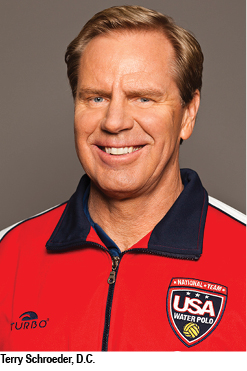
 The USA won bronze medals in the Olympic Games in 1924, 1932 and 1972. The US team was one of the best in the world in the 80s. With Terry Schroeder as the team captain, the USA won silver medals in the 1984 Olympic Games in Los Angeles and the 1988 Olympic Games in Seoul, Korea. In 1991, Schroeder led Team USA to the World Cup title in Barcelona, Spain.
The USA won bronze medals in the Olympic Games in 1924, 1932 and 1972. The US team was one of the best in the world in the 80s. With Terry Schroeder as the team captain, the USA won silver medals in the 1984 Olympic Games in Los Angeles and the 1988 Olympic Games in Seoul, Korea. In 1991, Schroeder led Team USA to the World Cup title in Barcelona, Spain.  We train Monday through Saturday. A typical week looks like this: Monday – 8 am – 9:45 weights/cardio in the gym, 10 – 12 noon swim/legs conditioning in the pool at CLU, 7 – 9:30 pm tactics in the pool at Oaks. Tuesday – 8:30 am to 11:45 am in the pool at CLU for swim/legs/tactics. Wednesday – 8 am – 9:45 weights/cardio in the gym, 10 – 12 noon swim/legs conditioning in the pool at CLU, 7 – 9:30 pm tactics in the pool at Oaks. Thursday – 8:30 am to 11:45 am in the pool at CLU for swim/legs/tactics. Friday – 8 am – 9:45 weights/cardio in the gym, 10 – 12 noon swim/legs conditioning in the pool at CLU, 7 – 9:30 pm tactics in the pool at Oaks. Saturday 9 am – 11:30 am in the pool at Oaks/CLU or Pepperdine. Obviously, this is all the players do right now. They are not working and they are sacrificing a great deal of time with their families to make this dream a reality. Some are living with “host families” in the Conejo Valley and others have rented apartments. We have six married players and three of those have kids. Our team is really a large family. Mixed in with the training has been common training with other teams. We hosted Germany, Italy and Montenegro in March and then recently went to Serbia and Italy for training. Later this month we will host the World League Prelims with Canada and Brazil and then in late May Croatia and Hungary are here for a series of games and training. In June, we will travel to Kazakhstan for the World League Super Finals before we return home for our final preparations. The Olympic Games opening ceremonies is July 27, 2012. The training has been going very well and we are improving every day and becoming a better team.
We train Monday through Saturday. A typical week looks like this: Monday – 8 am – 9:45 weights/cardio in the gym, 10 – 12 noon swim/legs conditioning in the pool at CLU, 7 – 9:30 pm tactics in the pool at Oaks. Tuesday – 8:30 am to 11:45 am in the pool at CLU for swim/legs/tactics. Wednesday – 8 am – 9:45 weights/cardio in the gym, 10 – 12 noon swim/legs conditioning in the pool at CLU, 7 – 9:30 pm tactics in the pool at Oaks. Thursday – 8:30 am to 11:45 am in the pool at CLU for swim/legs/tactics. Friday – 8 am – 9:45 weights/cardio in the gym, 10 – 12 noon swim/legs conditioning in the pool at CLU, 7 – 9:30 pm tactics in the pool at Oaks. Saturday 9 am – 11:30 am in the pool at Oaks/CLU or Pepperdine. Obviously, this is all the players do right now. They are not working and they are sacrificing a great deal of time with their families to make this dream a reality. Some are living with “host families” in the Conejo Valley and others have rented apartments. We have six married players and three of those have kids. Our team is really a large family. Mixed in with the training has been common training with other teams. We hosted Germany, Italy and Montenegro in March and then recently went to Serbia and Italy for training. Later this month we will host the World League Prelims with Canada and Brazil and then in late May Croatia and Hungary are here for a series of games and training. In June, we will travel to Kazakhstan for the World League Super Finals before we return home for our final preparations. The Olympic Games opening ceremonies is July 27, 2012. The training has been going very well and we are improving every day and becoming a better team. 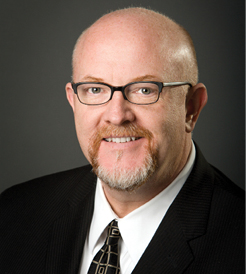
 Todd Singleton, D.C., is an author, speaker, consultant and a practicing doctor. He graduated from Los Angeles College of Chiropractic in 1990. For many years he ran the largest MD/DC/PT clinics in the state of Utah, until he switched to an all-cash, nutrition model in 2006. Dr. Singleton has a busy nutrition practice in Salt Lake City, Utah where he specializes in Weight Loss, Neuropathy, Fibromyalgia, Diabetes and other nutritional problems. He also speaks around the country and holds a monthly seminar in his office teaching other chiropractors how to add Weight Loss, Neuropathy and other nutritional programs into their offices. In an interview with The American Chiropractor, Dr. Singleton shares some of the perspective he has gained over the years, working within his own clinic, as well as consulting others on theirs.
Todd Singleton, D.C., is an author, speaker, consultant and a practicing doctor. He graduated from Los Angeles College of Chiropractic in 1990. For many years he ran the largest MD/DC/PT clinics in the state of Utah, until he switched to an all-cash, nutrition model in 2006. Dr. Singleton has a busy nutrition practice in Salt Lake City, Utah where he specializes in Weight Loss, Neuropathy, Fibromyalgia, Diabetes and other nutritional problems. He also speaks around the country and holds a monthly seminar in his office teaching other chiropractors how to add Weight Loss, Neuropathy and other nutritional programs into their offices. In an interview with The American Chiropractor, Dr. Singleton shares some of the perspective he has gained over the years, working within his own clinic, as well as consulting others on theirs.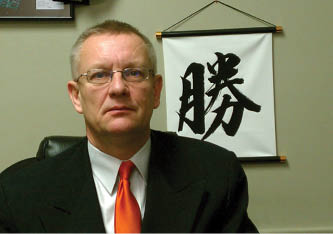
 :dropcap_open:A:dropcap_close:ndrew Cheesman, who has been with NAOMI/RF System Lab since 2007, is Sr. VP of Marketing and Sales for North America. Having an extensive background in merchant banking, Cheesman has lived in eight countries and has done business with 52 various countries over the years. Born and raised in the UK – and now residing in Lincoln, NE – you will see him at all major trade shows for chiropractic, including the Parker show in Las Vegas and the FCA show in Orlando. Having had in-depth conservations with over 2,000 chiropractors, Cheesman has some unique perspectives on where the profession is and, perhaps, where it is going.
:dropcap_open:A:dropcap_close:ndrew Cheesman, who has been with NAOMI/RF System Lab since 2007, is Sr. VP of Marketing and Sales for North America. Having an extensive background in merchant banking, Cheesman has lived in eight countries and has done business with 52 various countries over the years. Born and raised in the UK – and now residing in Lincoln, NE – you will see him at all major trade shows for chiropractic, including the Parker show in Las Vegas and the FCA show in Orlando. Having had in-depth conservations with over 2,000 chiropractors, Cheesman has some unique perspectives on where the profession is and, perhaps, where it is going.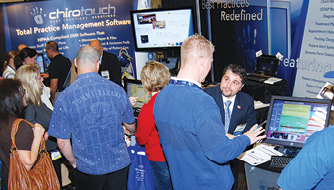
 TAC: Can you tell us a little bit about that and the process to get qualified?
TAC: Can you tell us a little bit about that and the process to get qualified?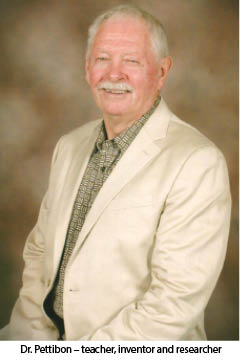
 As a teacher, inventor, and researcher, Dr. Pettibon’s influence and contributions to the science of chiropractic are legendary.
As a teacher, inventor, and researcher, Dr. Pettibon’s influence and contributions to the science of chiropractic are legendary.
 TAC: How did your peers view the changes that you were making to the delivery of chiropractic?
TAC: How did your peers view the changes that you were making to the delivery of chiropractic?  The soft tissue component is so critical to long-term results that we pre check our patients for their ability to respond to adjusting / mobilization / manipulation before ever putting any force into the spine. If the soft tissues are weak and unresponsive our first job is to strengthen them prior to any type of manipulation / adjustment / mobilization. I am excited to introduce a new paradigm shift Fall 2011 that I believe will revolutionize how the spine is viewed and the correction of spine problems.
The soft tissue component is so critical to long-term results that we pre check our patients for their ability to respond to adjusting / mobilization / manipulation before ever putting any force into the spine. If the soft tissues are weak and unresponsive our first job is to strengthen them prior to any type of manipulation / adjustment / mobilization. I am excited to introduce a new paradigm shift Fall 2011 that I believe will revolutionize how the spine is viewed and the correction of spine problems. 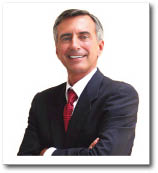
 In his first year of practice, Dr. Singer was seeing more than 100 patients per day. Within the first eight years of practice, he was dubbed “Master of New Patients” by his peers, and was averaging more than 50 new patients per week despite the advertising limitations in his state.
In his first year of practice, Dr. Singer was seeing more than 100 patients per day. Within the first eight years of practice, he was dubbed “Master of New Patients” by his peers, and was averaging more than 50 new patients per week despite the advertising limitations in his state.  DR. SINGER: Well, here’s how I feel it goes. You’ve got to take a look at the consumer. When they come to see you at your practice, their goal—they have a goal—is to get rid of their pain, their suffering, and to do that in the least expensive way possible.
DR. SINGER: Well, here’s how I feel it goes. You’ve got to take a look at the consumer. When they come to see you at your practice, their goal—they have a goal—is to get rid of their pain, their suffering, and to do that in the least expensive way possible.  DR. SINGER: Here’s my advice to the reader: we’re moving into this wellness revolution, everybody’s talking wellness. We all believe in that concept—and what’s the concept of wellness? That you can live longer, you can have your youth, your vitality, your energy. You can even look younger to other people. So, if I was to sit down with you and I said, “Listen, I know you’re coming here today looking for help to get rid of your back pain, and I certainly want to help you with that, but I want you to know, because we have more of a wellness-oriented practice, we actually have a larger goal for the people we meet, and that goal is to help our patients not only get free from pain, but live longer.
DR. SINGER: Here’s my advice to the reader: we’re moving into this wellness revolution, everybody’s talking wellness. We all believe in that concept—and what’s the concept of wellness? That you can live longer, you can have your youth, your vitality, your energy. You can even look younger to other people. So, if I was to sit down with you and I said, “Listen, I know you’re coming here today looking for help to get rid of your back pain, and I certainly want to help you with that, but I want you to know, because we have more of a wellness-oriented practice, we actually have a larger goal for the people we meet, and that goal is to help our patients not only get free from pain, but live longer. 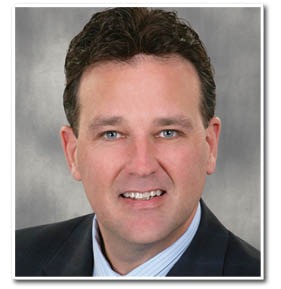
 :dropcap_open:D:dropcap_close:r. David Brady, a 1991 Texas Chiropractic College (TCC) graduate, is the first DC worldwide to break the “glass ceiling” within academia by being conferred vice provost of the health science division at the University of Bridgeport in Connecticut. He is the first and only chiropractor to attain that elevated status worldwide in a major university and, because of his extensive training in chiropractic, nutrition and naturopathic medicine, is now in a position to influence the educational direction of scores of minds, young and old, for years to come.
:dropcap_open:D:dropcap_close:r. David Brady, a 1991 Texas Chiropractic College (TCC) graduate, is the first DC worldwide to break the “glass ceiling” within academia by being conferred vice provost of the health science division at the University of Bridgeport in Connecticut. He is the first and only chiropractor to attain that elevated status worldwide in a major university and, because of his extensive training in chiropractic, nutrition and naturopathic medicine, is now in a position to influence the educational direction of scores of minds, young and old, for years to come. TAC
TAC